Spotlight in iOS 8: Explained
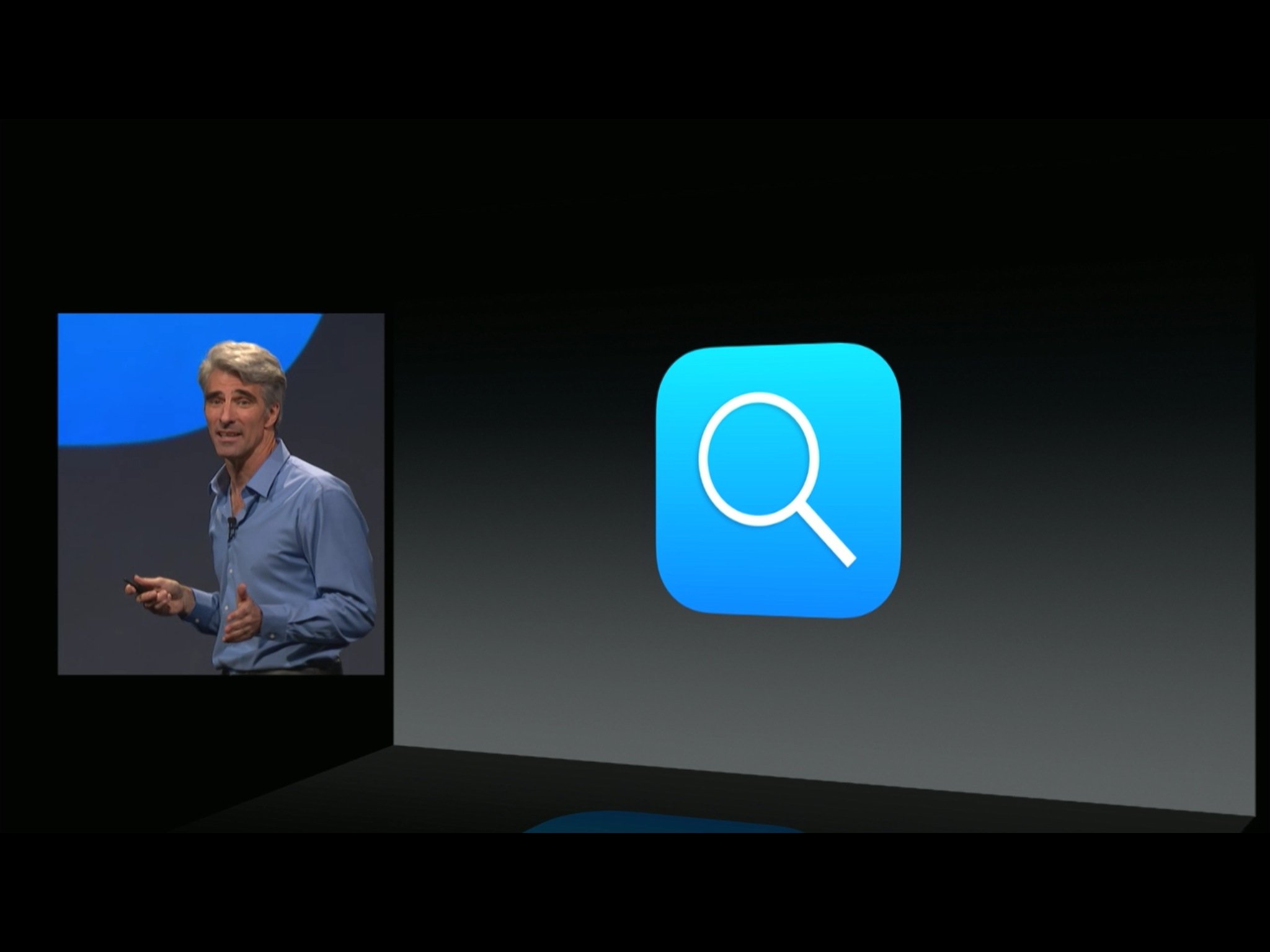
Spotlight is the name of Apple's system-wide search feature on both the Mac and iOS. With iOS 8, Spotlight is getting some new smarts, including location and context awareness, so it can help you find not only what you're looking for on your iPhone or iPad, but on the web as well. But how does the new Spotlight work?
Lighting the spots
Originally codenamed Matador, Spotlight was first announced for the Mac alongside OS X Tiger in 2004. It came to the iPhone as part of iOS 3 (iPhone OS 3) in 2009. It was the year after the introduction of the App Store but even in that short amount of time the number of apps people had on their phones had grown to the point where finding them wasn't always easy. So, in addition to the Home screen icons as app launcher they'd introduced with the first iPhone, they added a new screen to the left, accessible with a swipe, that you could use to type in app names and launch them that way. Spotlight could also be used to search for contacts, songs, email messages, and calendar events.
In iOS 7, Spotlight moved from a separate Home screen to every Home screen. Instead of swiping sideways to go to it, you swiped down to bring it to you. With it, you could search for apps, contacts, music, notes, events, mail, reminders, messages, and options to push the search out to the Web and Wikipedia.
By search standards it was simple — have index will populate results. The new one in iOS 8, well, the new one does more.
Searching smarter
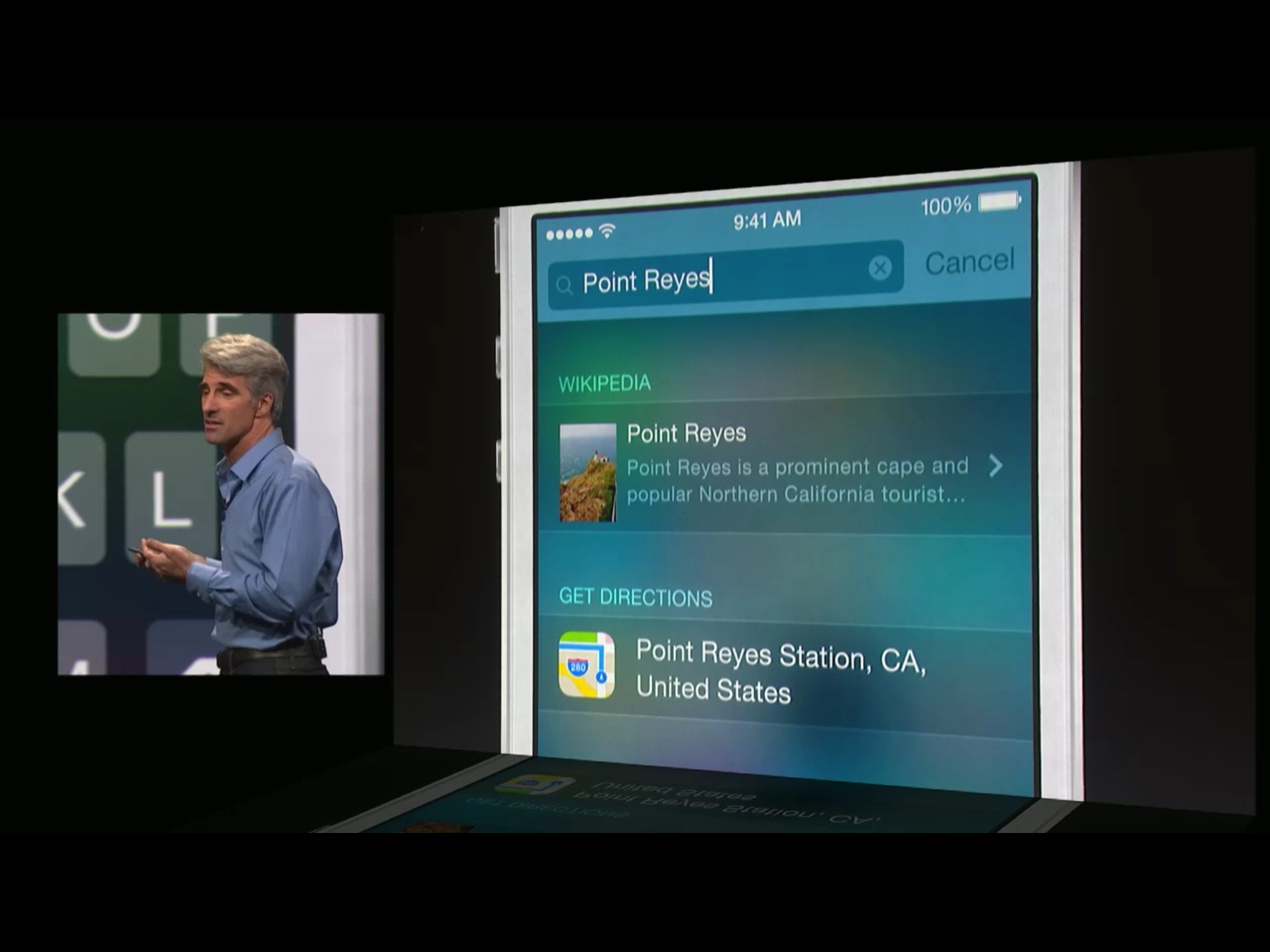
With iOS 8, Apple is bringing context and location awareness to Spotlight. That can manifest in different ways. For example, if you type in the name of landmark, like Point Reyes, you'll be given the option to immediately open it in both Wikipedia and Maps. That includes local restaurants and movie showings.
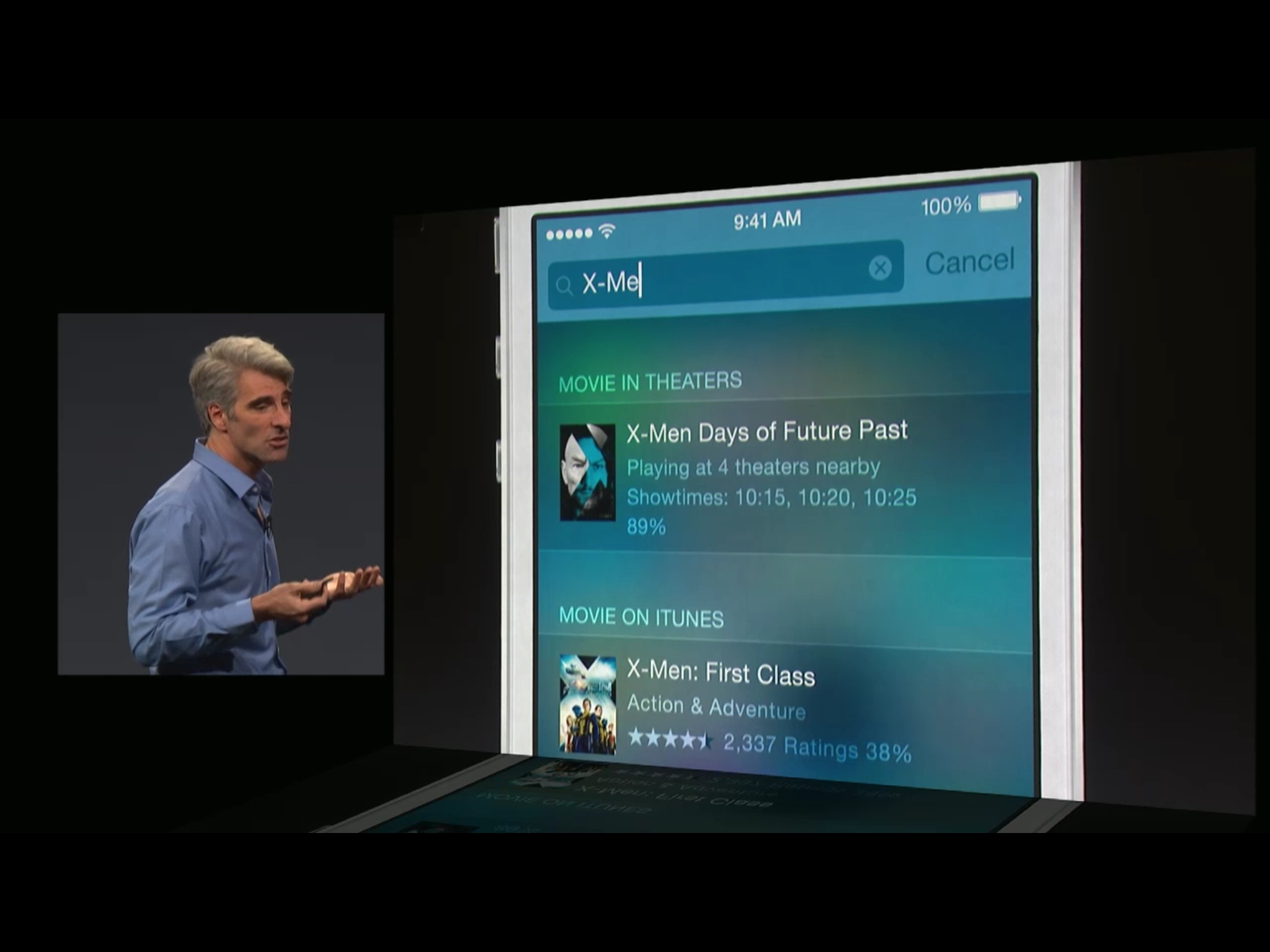
You can also get recent news and sports results, and the most relevant website.
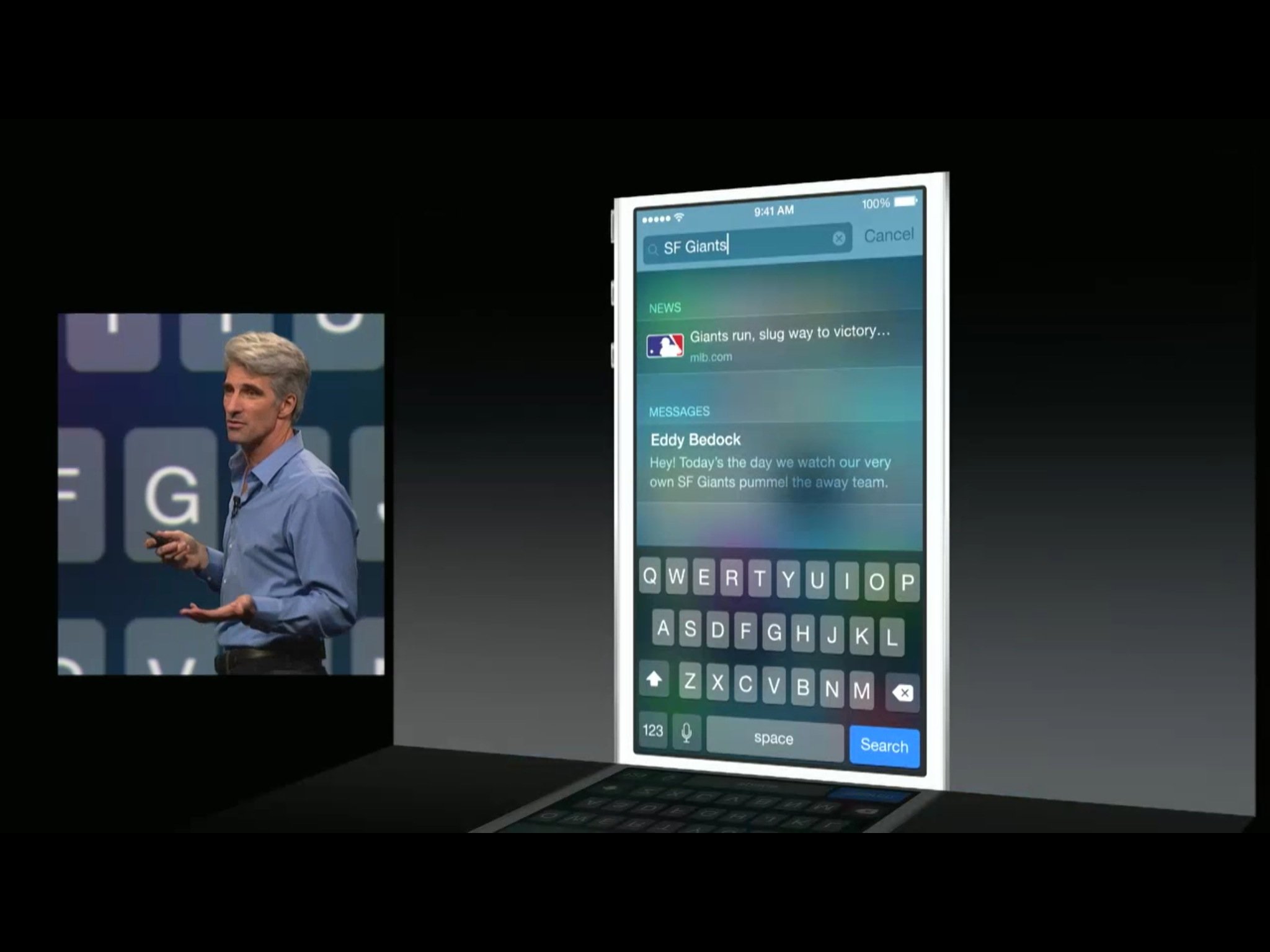
And, of course can also still search for music, videos, iBooks, and apps on your iPhone or iPad. However, Spotlight will not only give you results based on what's already on your device, but now it'll show you what's available in the iTunes, iBooks, and App Store as well.
iMore offers spot-on advice and guidance from our team of experts, with decades of Apple device experience to lean on. Learn more with iMore!
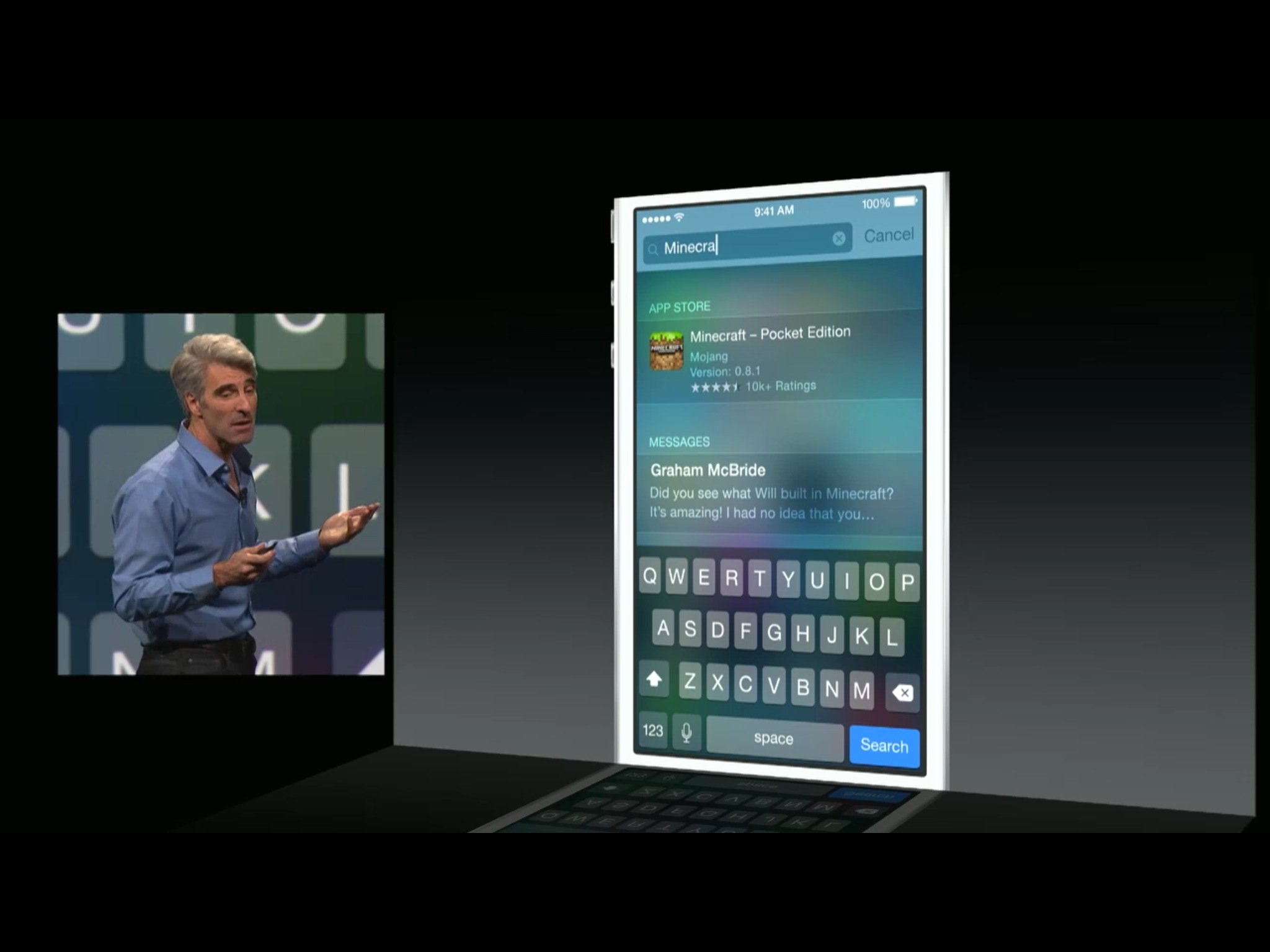
So, if you hear about a great new game or a hot new book, you don't have to launch a store and then search. You can swipe down, type in the name, and go straight to the app or title in the store.
Spotlight in Safari
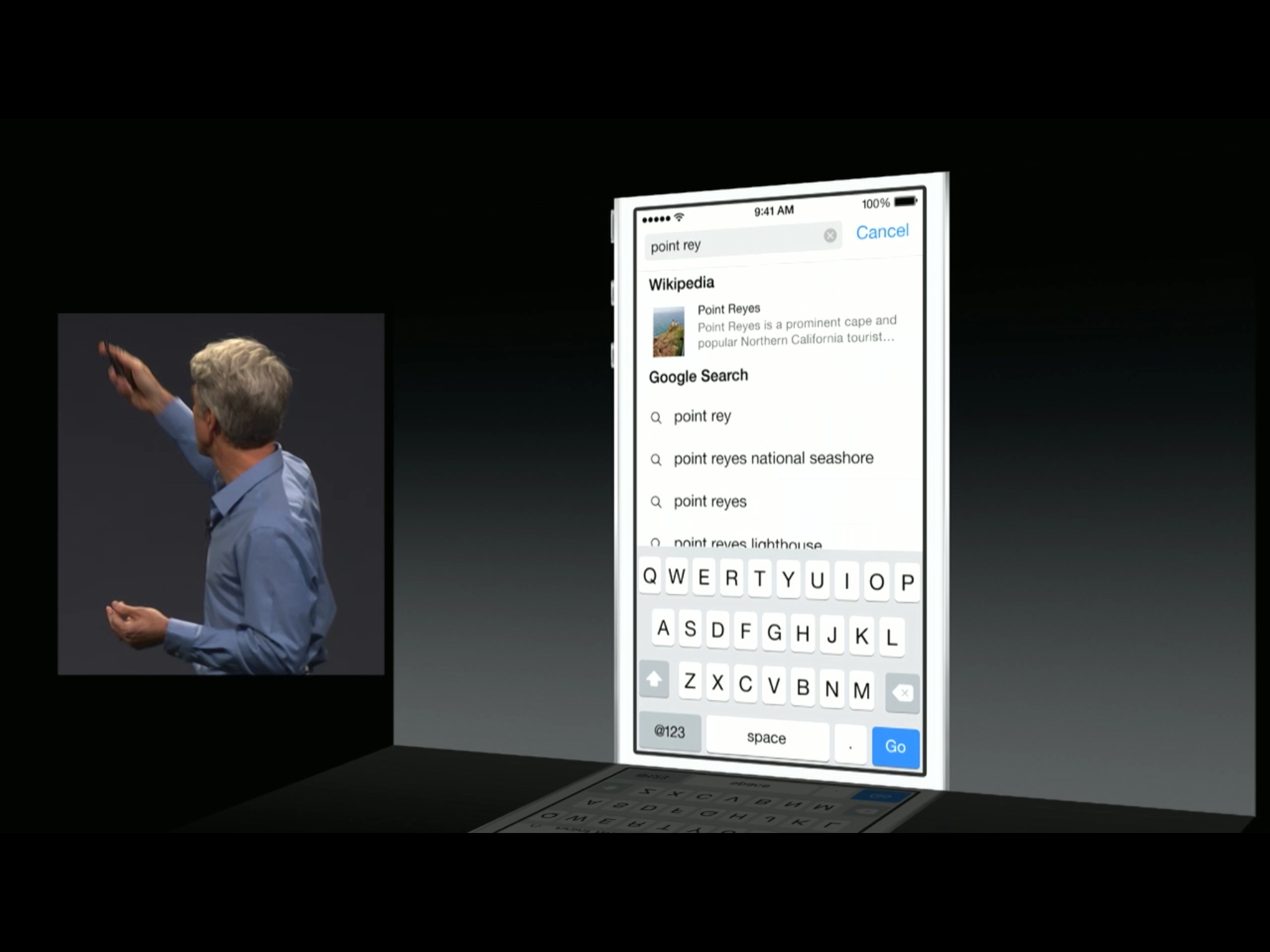
iOS 8 also brings Spotlight to Safari. Now, when you start typing in the unified smart search field you not only get top hits and the standard results, you also get Spotlight-style options, including the most relevant Wikipedia page.
Bottom line
Just like iOS 7 made Spotlight come to us, iOS 8 makes web-based results come to us. That might not make it the text-based natural language Siri front-end I've been pining for, but the context and location awareness make it an important step in that direction.
More of iOS 8: Explained
- Handoff in iOS 8 and OS X Yosemite: Explained
- Making and receiving phone calls on iOS 8 for iPad and OS X Yosemite: Explained
- Sending and receiving SMS/MMS on iOS 8 for iPad and OS X Yosemite: Explained
- AirDrop and Instant Hotspot in iOS 8 and OS X Yosemite: Explained
- QuickType keyboard in iOS 8: Explained
- Interactive notifications in iOS 8: Explained
- SceneKit in iOS 8: Explained
- Metal in iOS 8: Explained
- Widgets in iOS 8: Explained
- Share extensions in iOS 8: Explained
- Action extensions in iOS 8: Explained
- Inter-app photo and video editing in iOS 8: Explained
- Custom keyboards in iOS 8: Explained
- Family Sharing on iOS 8: Explained
- iCloud Drive and Document Picker for iOS 8: Explained
- Document provider extensions in iOS 8: Explained
- TestFlight in iOS 8: Explained
- Apple Maps in iOS 8: Explained
- iMessage in iOS 8: Explained
- Photos in iOS 8: Explained
- Spotlight in iOS 8: Explained
- Health in iOS 8: Explained
- Touch ID in iOS 8: Explained
- HomeKit in iOS 8: Explained
- Adaptive UI in iOS 8: Explained
- Manual camera controls in iOS 8: Explained

Rene Ritchie is one of the most respected Apple analysts in the business, reaching a combined audience of over 40 million readers a month. His YouTube channel, Vector, has over 90 thousand subscribers and 14 million views and his podcasts, including Debug, have been downloaded over 20 million times. He also regularly co-hosts MacBreak Weekly for the TWiT network and co-hosted CES Live! and Talk Mobile. Based in Montreal, Rene is a former director of product marketing, web developer, and graphic designer. He's authored several books and appeared on numerous television and radio segments to discuss Apple and the technology industry. When not working, he likes to cook, grapple, and spend time with his friends and family.
